Camping Inspiration: An unforgettable European camping road trip
Camping magazine editor Iain Duff and his family hit the road for the ultimate European camping holiday
Just how do you decide on the highlight of a trip like this?
Was it the early morning dip in a crystal clear Swiss lake before the rest of the campsite was awake? Or maybe the stunning mountain railway journey that took us to the top of Europe and provided magnificent views across snow-capped peaks?
The exhilarating drive over a winding Alpine mountain pass let me live out my James Bond fantasies. And if diving into the cool waters of Lake Garda on a sweltering hot afternoon didn’t have quite the same danger element, it was no less memorable.
Eating ice cream at a fancy waterfront gelateria in Lombardy gave us a taste for how the other half live and discovering cola beer in the Black Forest was a revelation. Despite all that, I suspect our teenage son would say the best part of the holiday was the all-you-can-eat world buffet on the overnight ferry!
A full-on tour through Europe is something I’ve longed to do for as long as I can remember. I don’t know if it was all the Brexit talk or the fact that our eldest was now 13 and already showing some resistance to family camping trips, but it felt like the time had finally come to take the plunge.
Happily, our two-week road trip was everything we hoped it would be. The memorable moments began even before we’d left the UK. On the way to the ferry we took a short detour off the A1 for an impromptu glimpse at the incredible Angel of The North. Then, as we waited for the boat to depart from Newcastle, we were treated to a surprise aerobatics show by the Red Arrows.
That hadn’t been part of the plan, but it’s about the only thing we didn’t plan for. Long before it was hijacked by Clarkson, Hammond and May, the Grand Tour was how they described the European excursions of fashionable young British aristocrats of the 18th century as they learned about the culture, language and architecture of our Continental neighbours. But plotting our route through Belgium, Luxembourg, France, Switzerland, Italy, Germany and the Netherlands, it felt a bit like we were getting ready for a heat of Jeux Sans Frontieres. Admittedly, there would be no wacky oversized It’s A Knockout-style costumes or water-based obstacle courses (although the giant inflatable ice lollies we picked up in Italy wouldn’t have looked out of place on that show), but the trip certainly had the potential to descend into mayhem without proper research.
OUR GUIDE TO STRESS FREE DRIVING IN EUROPE
Luckily, for a big trip like this, the planning is all part of the fun, or it is for me at least. Weeks before we set off, I was poring over road maps and scouring the web; working out routes, deciding on places to go and drawing up lists for everything imaginable. By the time we left the house we were ready for pretty much any eventuality. You can plan the trip by yourself, but we booked most of it through Eurocamp Independent, who have a network of sites for people travelling with their own tents, caravans and motorhomes across the Continent. They will basically organise the whole holiday for you, from ferries to sites, with added extras like couriers on site, kids’ clubs and travel packs filled with useful practical advice.In the end, our summer tour took us from Amsterdam down to the Swiss Alps, then on to Lake Garda and up through the heart of Germany before ending up back in Holland. During the journey, we passed through 10 countries, drove more than 2,000 miles, spent two nights on ferries, swam in two lakes and sailed across another, took a train to the top of the Alps, celebrated Swiss National Day and ate our own combined weight in pizza.
NEWCASTLE TO LUXEMBOURG
We had booked a cabin on the overnight DFDS ferry from Newcastle to Amsterdam. It’s not an especially cheap option, but it’s the perfect springboard if you’re going anywhere east of France, especially if you’re based in the northern half of the country. The crossing takes just over 15 hours, so plenty of time for a meal, a spot of duty-free shopping and a drink at the bar, before retiring to the cosy en-suite cabin for a good sleep. As I was going to be doing all the driving, it was important that I was well rested… day one would be a relatively gentle 200 miles along good roads, but from past experience I knew that the first day of driving on the Continent is always a stressful experience so you do need to be firing on all cylinders.
Once you’ve got used to driving on the right, motoring through the Netherlands is very easy. The wide, flat motorways are well maintained and signposting is clear and ample, making it a comfortable, if somewhat uninspiring, drive. There was a notable change in surroundings when we crossed into Belgium – the roads seemed slightly less loved and everything looked a little run-down compared to the shiny buildings in Holland. On the plus side, there was more to look at than just windfarms and the first thing we saw when we crossed the border was a huge roadside advert for chips. My kind of country.
The historic city of Liege – famed for its sweet waffles and mish-mash of architectural styles – was earmarked for a lunch stop. Unfortunately our attempts to penetrate the largely pedestrianised city centre were thwarted by confusing road signs and an inability to negotiate mini-roundabouts. We also wasted a ridiculous amount of time trying to work the self-service petrol pumps, so in the end decided to cut our losses, get back onto the motorway and carry on towards Luxembourg for our first overnight stop.

Picture credit: stock.adobe.com
Luxembourg, the world’s sole remaining Grand Duchy, is one of the smallest countries in Europe with a total population of about 550,000, roughly the same as Liverpool. More than one-in-five of them live in the imaginatively-named capital, Luxembourg City, which is a pleasant enough administrative centre with plenty of shopping and places to eat but nothing to really get the pulse racing.
Far more interesting is the Mullerthal region, known as Little Switzerland because of its hilly landscape, which is home to numerous medieval castles and museums. The small town of Larochette, about half an hour from the capital, also boasts an excellent campsite with superb facilities, including a semi-outdoor swimming pool with huge retractable cover.
In fact, considering the size of the country, Luxembourg has a surprising number of campsites and most of the places you’d want to visit are within fairly easy reach wherever you pitch. Supermarkets, including the Cactus chain, are plentiful and reasonably priced for stocking up on supplies, especially if you are travelling on to Switzerland, where everything is exorbitant. As an added bonus, for some reason fuel is cheaper here than anywhere else in Europe, so even if you’ve no plans to stop here for any length of time, you’d be wise not to pass the Duchy (sorry).
LUXEMBOURG TO SWITZERLAND
After a night in Luxembourg we set off for Switzerland the next morning, our route taking us south through France, via Strasbourg, and crossing the border at Basel. There are no passport checks entering Switzerland, but you may be stopped by customs officers and asked if you have anything to declare. We bought a motorway pass here – you need one to travel on the main Swiss roads, but it’s 40 francs well spent, as every road we drove on was superb.
The further we got into Switzerland the more spectacular the surroundings became. By the time we reached Lake Thun, in the heart of the Bernese Oberland region, the rolling hills had turned into tree-lined mountains that rose like colossal, jagged, white-tipped fangs on the horizon.

Located three miles from the resort town of Interlaken, our campsite, Manor Farm, was right on the shores of the lake, with direct access to the water from its own beach and awesome views of those majestic mountains. We were visiting in the middle of summer and the site was busy and bustling, with campers from all over Europe bringing a cosmopolitan feel. It had a good mix of tents, caravans and motorhomes and although the pitches were close together, it never felt crowded or rowdy.
In fact, there was only one time we heard raised voices during our stay, and I’m afraid to say it was my wife and I who were responsible. So if your peace and quiet was shattered that afternoon by a couple of red-faced, shouty Scots then I can only apologise. The golden rule of camping is always practice pitching a new tent at home before you take it to the campsite. What you definitely shouldn’t do is try to put up a complicated new tent for the first time after a five hour drive across Europe, especially if the temperature is in the high 20s and you’ve arranged to meet up with family in half an hour. Surprisingly, it turns out that things can get rather fraught in those circumstances, particularly if the pitching instructions with the tent aren’t quite as clear as you’d like them to be. After much sweating and toil, we worked out what we were doing wrong and got there eventually, but not before the kids had learned a whole new vocabulary.
With impeccable timing, my sister and brother-in-law arrived as the final peg went in, bringing wine and beer which made everything better. After quickly pitching the teenager’s “pup” tent, dinner was in the site’s own restaurant where we enjoyed the first of the trip’s many pizzas. Our youngest disappeared to the playpark to make new pals like nine year olds do, and the rest of us relaxed over a few drinks and a catch-up as darkness fell. The perfect way to end a long day.
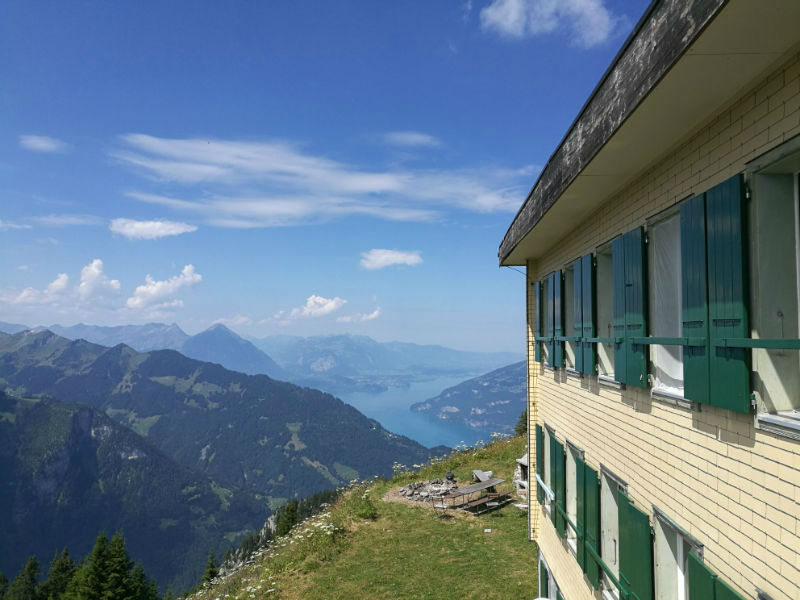
Next morning, after a hearty continental breakfast with ingredients gathered from the well-stocked site shop, we said farewell to the rellies and drove to Wilderswil where we caught the mountain railway for its 50 minute journey to Schynige Platte, 6,450ft above sea level. The cog railway opened 125 years ago and it exudes the gentle charm of a bygone era as it sedately climbs to the top. From our wooden bench seats we were treated to breathtaking views over lakes Thun and Brienz, Interlaken and the Alps, and then to cap it all, as we pulled into the station at the summit we were given a musical welcome by a pair of alphorn players.
From the top, the panoramas over the Swiss Alps are simply magnificent; the Eiger, Jungfrau and Mönch are so perfect they look like they’ve been painted onto a huge canvas backdrop and, with the cattle bells clanging away melodiously, you half expect Julie Andrews to come sweeping down one of the lush green meadows and bursting into song.
If you’re feeling energetic, there’s a circular hike around the mountain ridge to complete, but we chose to take a more gentle meander round the Alpine garden, breathing in the fresh mountain air and enjoying the views. The air up here is as fresh as it gets, although it was a slightly surreal experience, walking around in shirt sleeves thousands of feet up, surrounded by snowy mountains. Lunch was taken on the sun terrace of the mountain-top self-service restaurant – alphorn players again providing the traditional Swiss soundtrack – before we took the train back down to Wilderswil.
Back at ground level, we decided to spend a relaxing afternoon at the campsite, reading by the tent, splashing around in Lake Thun, cooking and generally chilling out in the sunshine. In the mad rush to find “things to do” on holiday, sometimes it’s easy to forget how nice it is to just put your feet up on the campsite and do nothing. It’s not always easy to completely relax, though – just as we were dropping off to sleep, the peace of the campsite was shattered with a huge explosion that echoed round the mountains. A couple of hours later there was another, and as dawn broke, yet another. Either we were under attack or there was something else going on, and thankfully a quick Google search revealed that it was the latter.
It was Swiss National Day, a public holiday to celebrate the founding of the country, and the explosions were fireworks set off by enthusiastic locals to mark the occasion. Now all the Swiss flags and bunting that adorned the campsite buildings and fluttered from tents and caravans made more sense! After a fantastic pre-breakfast swim in the lake we caught a bus to Interlaken to take a boat trip around Lake Brienz, a super way to see the mountain scenery, especially on a sunny clear day. The trip from Interlaken to Brienz takes about 75 minutes, with various stops along the route where you can depart or board. From Brienz you can take a trip on the magnificent Rothorn steam railway or catch a bus to the open air museum of Swiss life at Ballenberg.
QUICK GUIDE TO CAMPING IN EUROPE
Because we wanted to get back in time for the Swiss Day festivities, we opted to stay on the boat and sail back – taking lunch on board – but if you disembark here you can take a train to Interlaken, which takes about 20 minutes. Back at the campsite it was lovely to see happy Swiss families getting together to celebrate their national day and rather than take the free shuttle back into Interlaken for the big official fireworks display, we decided to stay on site and join in with the local celebrations by the lake. The fireworks went on late into the night
With the smell of gunpowder still hanging in the air, we rose early next morning and packed up for of the next leg of the journey to Lake Garda. In three days, we’d only scratched the surface of what the Jungfrau region had to offer but what we had experienced was a joy. We knew the scenery would be spectacular but we weren’t prepared for just how dazzling it would be. We made a decision to return at some point and explore further, with a trip to the top of the spectacular Jungfraujoch top of the bucket list – although a bit of saving-up will definitely be required.
SWITZERLAND TO ITALY
The route from Interlaken to Italy takes you through the Gotthard road tunnel, a 10-mile-long concrete tube that allows you to drive through the heart of Alps and into the Italian region of Switzerland. But before we reached it we had one last taste of the country’s astonishing natural landscape as we crossed the Susten Pass. This, frankly terrifying, road links the village of Innertkirchen in the Bernese Oberland with Wassen in the Reuss Valley and climbs its way to a height of more than 7,400ft, almost twice as high as Ben Nevis. It’s only about 28 miles long but these bald facts don’t get close to telling you the full story. This is one of the greatest roads you’ve never heard of.
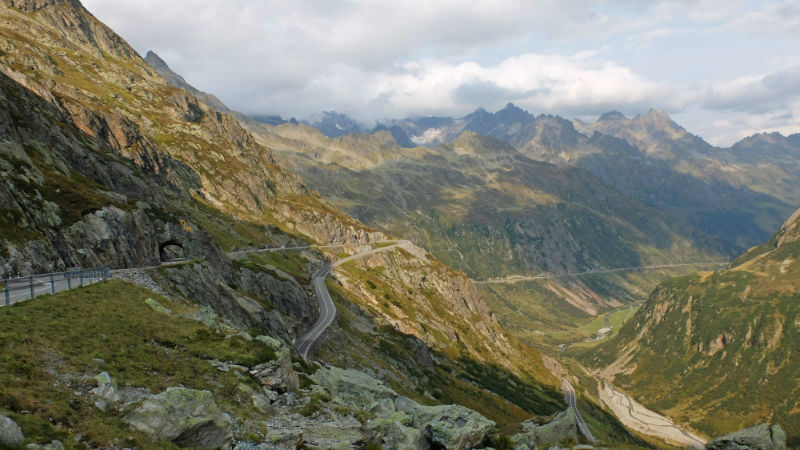
Picture credit: stock.adobe.com
The tarmac clings desperately to the side of the mountain as it twists and turns on a steep ascent towards the top. The sharp hairpin bends seem to jut out into the abyss as you creep cautiously towards them, but if you have the guts to look out the car window, the views over the vast valley below are absolutely breath-taking. Alarmingly there are no barriers for long stretches of the route – all that separates you from a vertical drop of thousands of feet is the odd stone block dotted along the side of the road. It’s white-knuckle stuff and certainly concentrates the mind!
On the descent the road is just as precarious, with yet more sharp bends and precipitous drops. At least there are more barriers on this section, although ironically that makes you wonder how dangerous the road must be if they’re needed! Again if you’re brave enough to open your eyes (passengers not drivers!), the sweeping views over the Meien valley make it all worthwhile. I’m not going to lie – as we reached ground level I was mightily relieved. But what an unforgettable experience.
We powered on through the Gotthard tunnel, then past Lake Lugano and on into Italy. After the adrenaline-charged crossing of the Alps, and a chaotic drive on the motorways round Milan, the gentler roads of Lake Garda came as something of a relief. And once we got off the dreary and uninteresting main highway and into the pretty towns and villages on the shores of this vast expanse of water, it was easy to understand why people return to this beautiful part of the world time and time again.
Our home for the next five nights was Camping Eden in San Felice del Benaco, on the south western side of Lake Garda, a popular destination for campers. Part of the Eurocamp Independent network, it was a bustling holiday park with excellent facilities, including a pool, restaurant, mini-supermarket and best of all, its own private beach on the shores of the lake. The site was on the side of a hill and offered amazing views over the lake, particularly in the evening as the sun set behind the mountains on the opposite shore.
12 TOP TIPS FOR CAMPING ABROAD
Having mastered the tent pitching in Switzerland, we had our Vango Rosewood up in a matter of minutes this time, and with the temperatures soaring into the 90s it was just as well. There wasn’t much respite from the afternoon sun, so with everything set up the four of us took a walk down to the lake. The campsite’s slice of lakeside territory includes a grassy hill with trees that provide some shade, a stretch of sandy beach and a wooden jetty. Diving into the cool water on that first sweltering hot afternoon was one of the highlights of the trip.
If the Swiss part of our tour had been a bit of a whirlwind, the plan for Italy was to take it easy. We quickly settled into a daily routine: breakfast; a couple of hours at the lake before the sun got too strong; early lunch back at the tent; another couple of hours at the pool; an afternoon drive (taking advantage of the car’s air con, natch) to somewhere not too far away; then, as the sun set and the temperature dropped, back to the site for dinner.
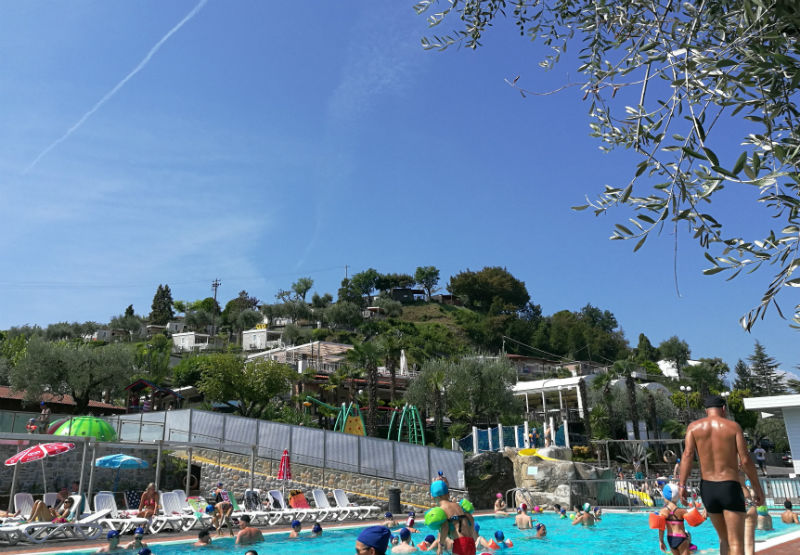
There’s a good road network around Garda, so exploring the area is simple. Public transport is also worth exploring, with a good bus service linking the villages and towns dotted along the lakeside. For an unforgettable day out, it’s possible to take the train to Venice from Desenzano de Garda. The journey takes less than two hours and isn’t too expensive – and if you’ve never seen Venice before then I’d highly recommend it.
Desenzano itself is a charming lakeside resort with lovely views out over the water, two harbours and two public beaches. A medieval castle overlooks the town and provides panoramic views of the lake, while the narrow, pedestrianised streets in the historic centre are lined with fashionable boutiques, gelaterias, cafés, restaurants and bars. The weekly market takes place on the lakefront and there’s a real feeling that this is a vibrant Italian community, as well as a tourist attraction.
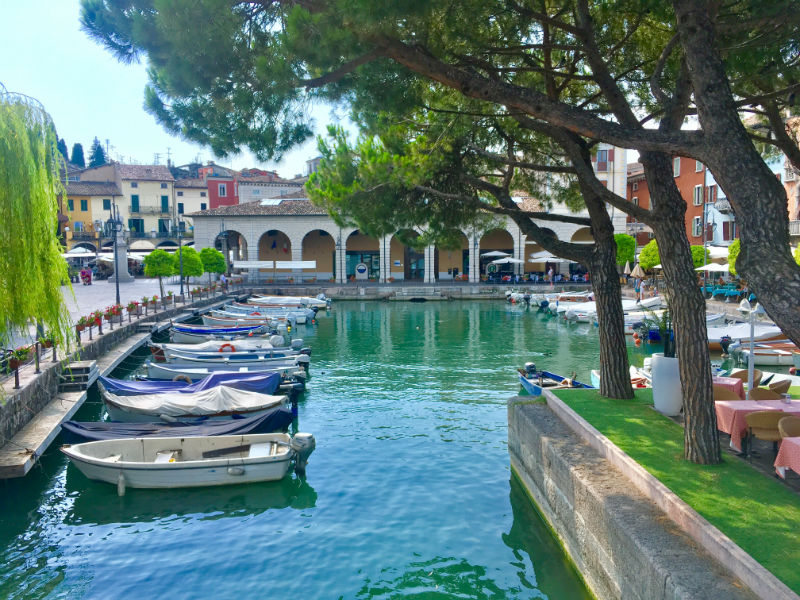
Desenzano is a place to enjoy the simple things in life, so it fitted perfectly with our plan to relax and unwind – a gentle meander along the esplanade, a stroll round the shops (window shopping only, it has to be said) and, of course, gelato in one of the many smart cafés dotted around town.
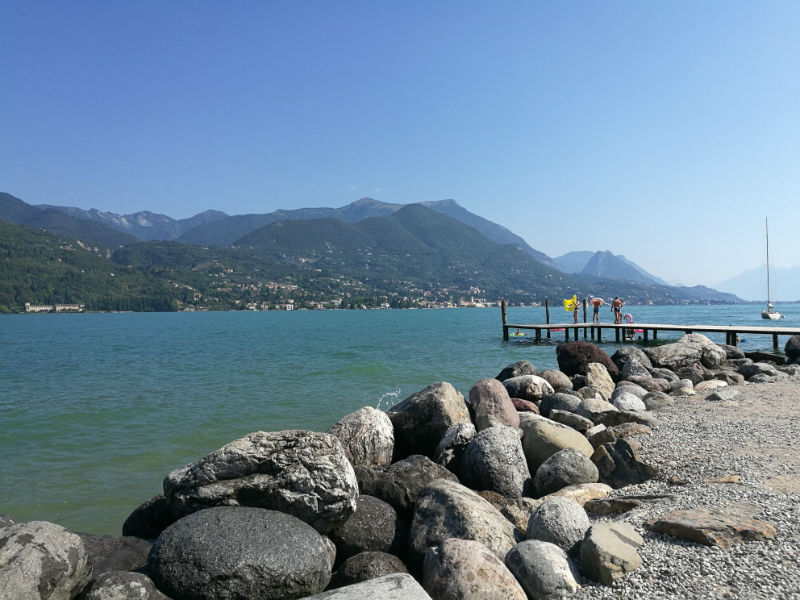
For further retail therapy, a couple of miles from the centre of Desenzano is the Il Leone shopping centre, a massive, modern mall filled with stylish shops of every kind. Yes, I know going to a shopping centre on holiday isn’t everyone’s idea of a good time, but if you want some respite from the intense afternoon heat, this air conditioned retail palace is the place to go. It also boasts a fantastic supermarket where you can stock up on no end of Italian cooking specialities at a fraction of the price you’d pay at home – or in the lakeside tourist shops. Ideal for a spot of campsite cooking.
Speaking of food, while some campsite restaurants can be overpriced or offer uninspiring fare – and more often than not, both – the diner at Camping Eden was as good as any local eaterie and excellent value for money, so much so that we ate there every evening. The menu offered all sorts of pasta, pizza, salad and meat dishes, so there was never any chance of boredom setting in, and the staff were friendly and efficient. And to top it all, the views out over the lake were spectacular. Highly recommended.
LAKE GARDA TO GERMANY
Recharged after five sublime days on Lake Garda, it was time to get back on the road and head north to Germany. On our way into Italy from Switzerland we had crossed the Susten Pass, an exhilarating if somewhat terrifying, mountain road across the Alps. This time the route was a little less scary, with wider roads and fewer hairpin bends. It still had its worrying moments, though, particularly on the huge bridges which allow traffic to creep up the side of the mountains towards the four-mile long, San Bernardino tunnel.
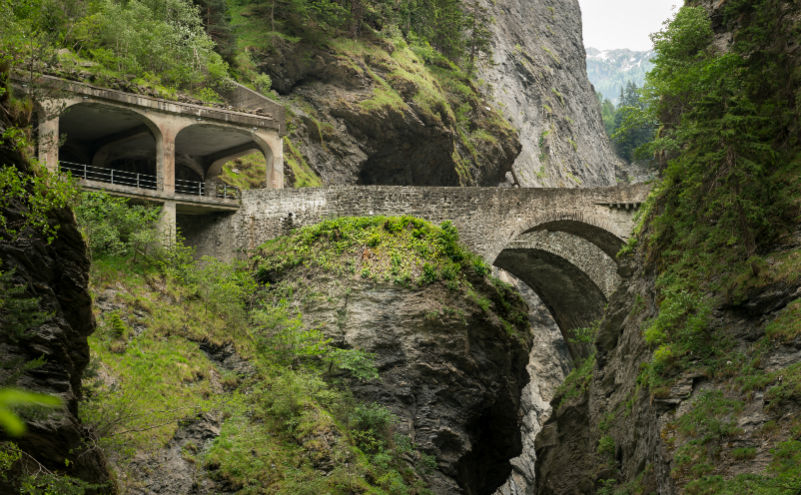
On the descent, it’s definitely worth a brief detour from the main A13 at Thusis to visit the Viamala Schlucht, a gorge that was carved through the 300-metre high cliffs thousands of years ago by glacial ice and the waters of the Rhine. More than 300 stone steps lead you into the depths of the gorge, where a visitors' platform offers stunning views.
Back on the road we whizzed through Switzerland (make sure you have a Swiss motorway pass), Liechtenstein and Austria before arriving in Friedrichshafen, on the banks of Lake Constance, known as Bodensee by the locals. This 63km-long body of water is bordered by Germany, Switzerland and Austria and is a hugely popular summer destination. The lake is ringed by resort towns, with Friedrichshafen the biggest on the German side. It’s not the prettiest of towns, but it does have a pleasant waterfront, with bars and restaurants overlooking the lake and a museum dedicated to Zeppelin airships, which are built here.
It’s also a good place to base yourself if you want to explore the Bodensee region, with several good campsites scattered around the area. We were only here for one night, but managed to fit in a visit to the ancient town of Meersburg, where we encountered rain for the first time in what felt like months. Having resisted the temptation to enhance our wardrobes with lederhosen and dirndl, we instead found a waterfront restaurant and enjoyed a typical southern German meal of Schweineschnitzel and käsespätzle (pork escalopes and cheese noodles) washed down with a couple of glasses of the local brew, Rothaus Pils. By now the rain had stopped and we were treated to a spectacular sunset over the lake.
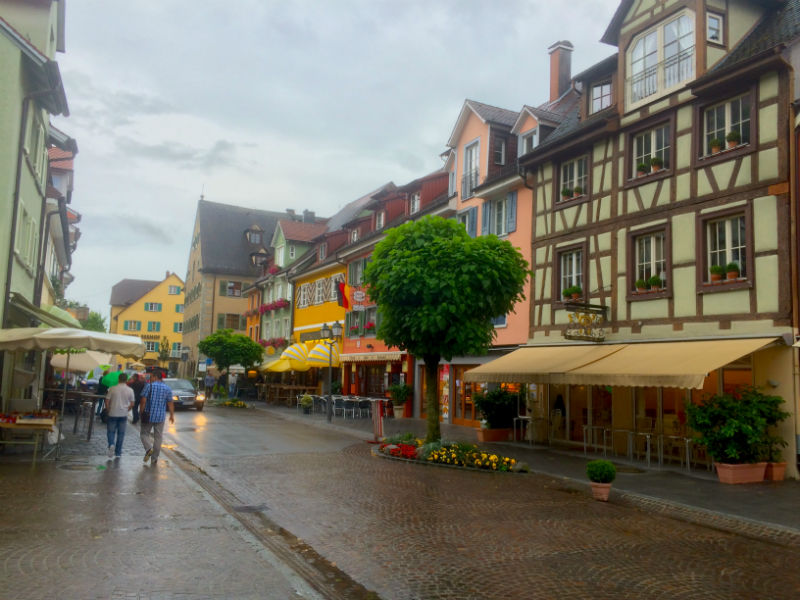
After stocking up on fresh fruit from an incredible roadside vending machine, we set off early the next morning for Bad Liebenzell in the Black Forest, where we were booked into another Eurocamp Independent site, Campingpark Bad Liebenzell. The superbly appointed site sat in a wooded valley on the banks of the River Nagold, overlooked by a medieval castle. Campers can use the adjoining heated swimming complex, which has a fun pool with rapids, a waterslide and a paddling area for young children.
The pitches were flat and grassy and the facilities spotlessly clean. As we found at all our stops, there was a good mixture of nationalities – our pitch was surrounded by campers from Germany, the Netherlands and Denmark, as well as from the UK. Of course, pretty much everyone speaks English, but one of the joys of camping abroad is being able to try out your schoolboy/girl language skills, even if it’s limited to a quick “Morgen” on the way to the shower block.
The campsite has a bar and restaurant but, despite a sudden thunderstorm, we decided to take the short walk into the centre of town, with its thermal baths, shops and traditional inns. At the cosy and welcoming Gasthof sur Sonne we discovered cola beer, essentially local wheat beer topped up with Coca Cola. Yes, it sounds rank but it’s actually delicious. Much to our disappointment, what we didn’t find was any sign of that 1970s favourite, the Black Forest Gateau.
BLACK FOREST TO AMSTERDAM
Germany’s autobahns are revered by some driving enthusiasts and if you want to get from A-to-B as quickly as possible, with the minimum of fuss, they certainly fit the bill. But the truth is, thundering along these long, straight motorways can be pretty boring. As we zoomed north from the Black Forest towards the Dutch border, the scenery was fairly humdrum, and we started to long for some Alpine pass-style thrills to break the monotony. Instead we were rewarded with roadworks and torrential downpours, which wasn’t exactly what we were looking for.
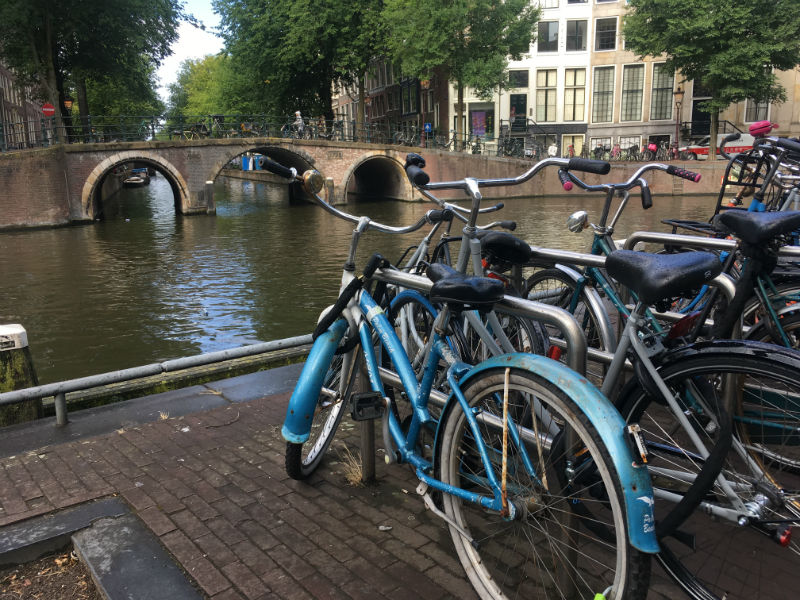
Originally we had planned to spend our final night on the Continent somewhere in northern Germany, before going straight to Amsterdam to catch the ferry home. But a last minute change of plan meant a night in Holland and the chance to spend the day in the Dutch capital. It was a short visit but we managed to pack a fair bit in. Parking on the outskirts of town, we took an early morning walk along the banks of the Amstel into the city centre, where we had breakfast in a coffee shop (no, not that kind of coffee shop), visited Dam Square and explored the atmospheric lanes that weave their way around the famous canals. Just enough to whet the appetite for a longer visit in the future.
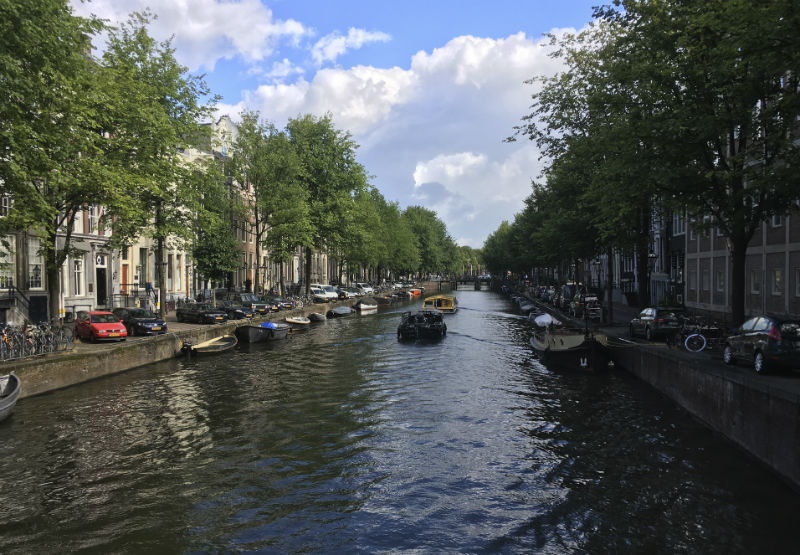
And so that was it. A two-week, 2,000 mile trek round Western Europe, passing through 10 countries. We survived scorching temperatures, a couple of epic thunderstorms, a few grumbly tummies and a couple of Sat Nav-induced squabbles. But above all we’d had a lot of fun and were returning home with a lifetime of memories. And that was the whole point. All that was left now was the all-you-can-eat buffet on the homeward ferry. What a way to finish a grand tour.
FERRY
Iain and his family travelled on the DFDS overnight ferry between Newcastle and Amsterdam. Prices for the 15 hour crossing start from £70 per person each way, based on four people travelling in a car with trailer and sharing an inside cabin. The breakfast buffet is £8.75 per person (when pre-booked) and all-you-can eat dinner at Explorer’s Kitchen for £19.95 per person (when pre-booked).
For more information visit dfdsseaways.co.uk






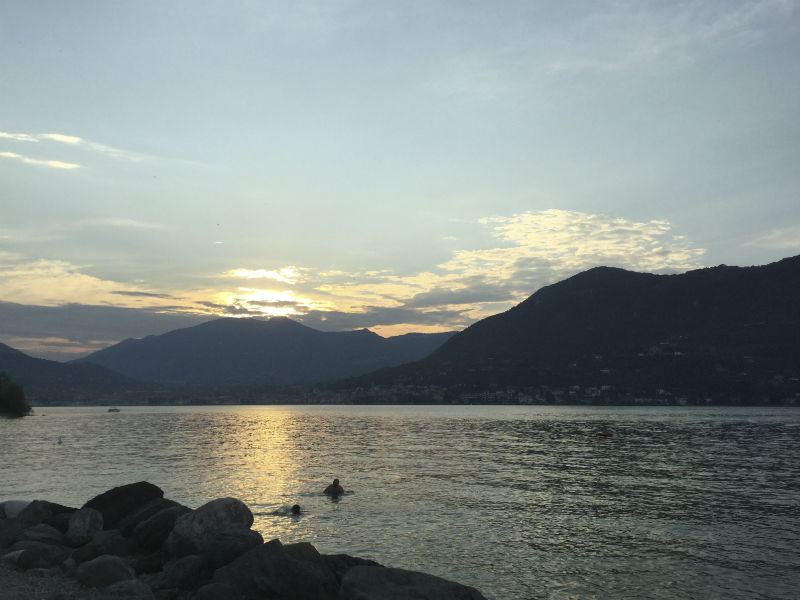
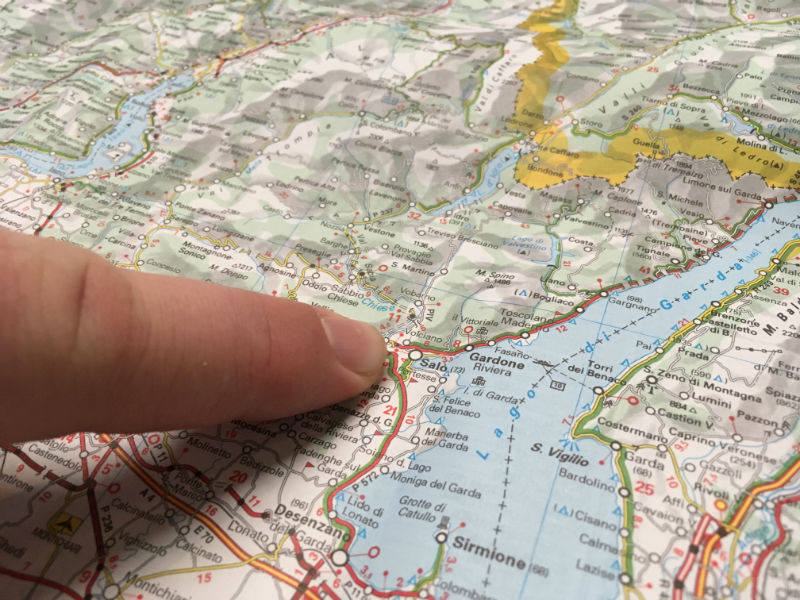
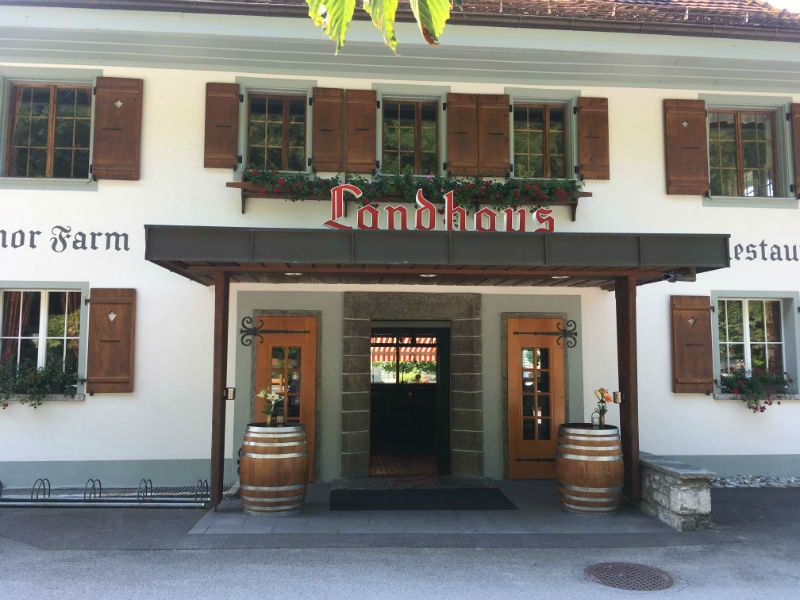
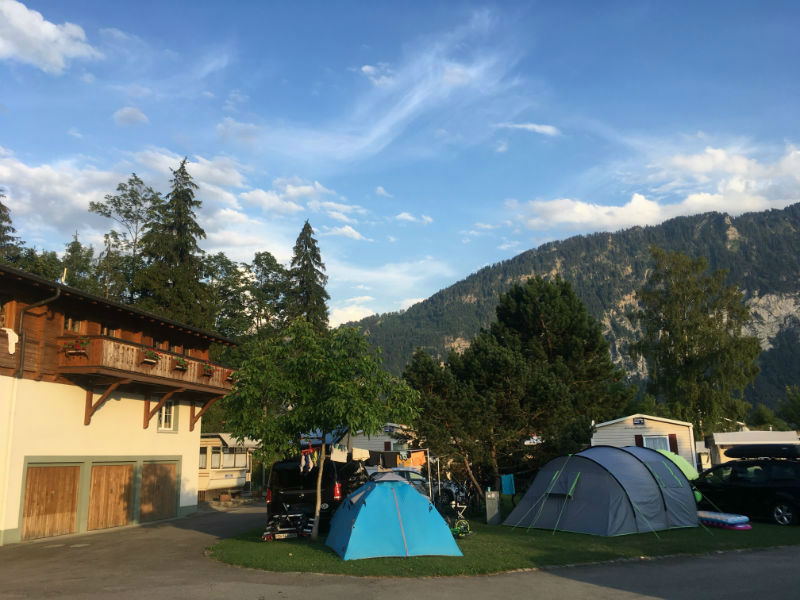
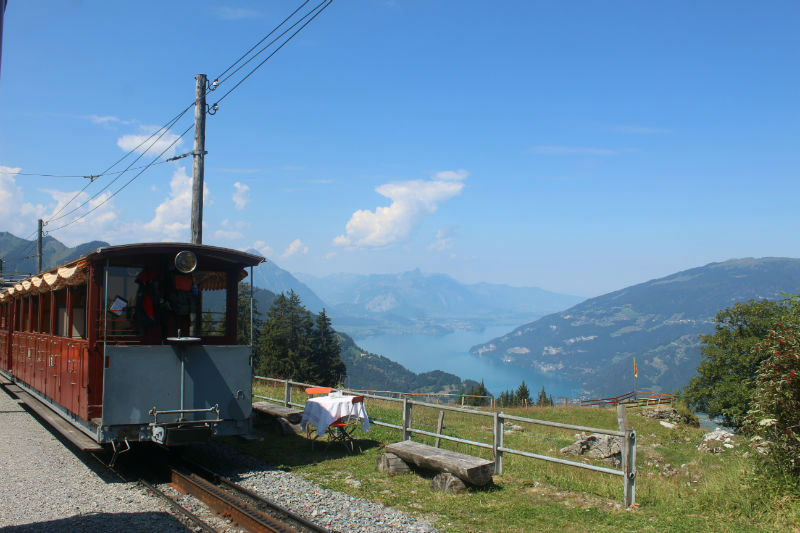
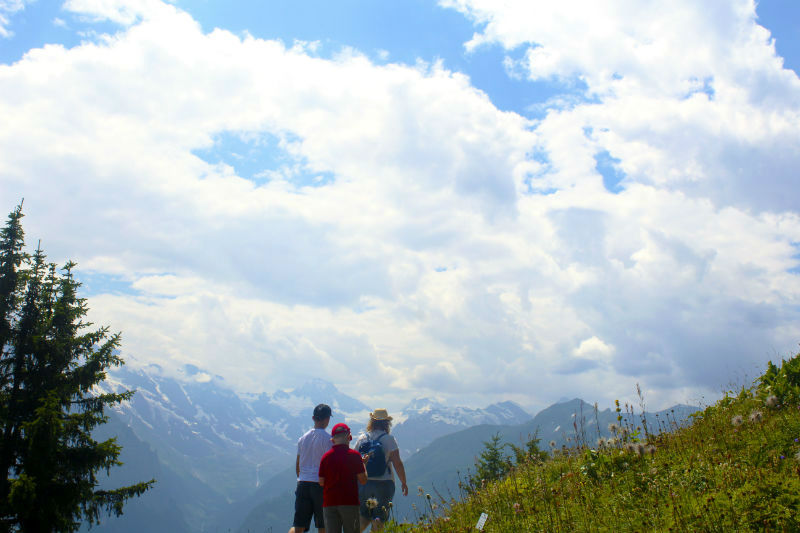
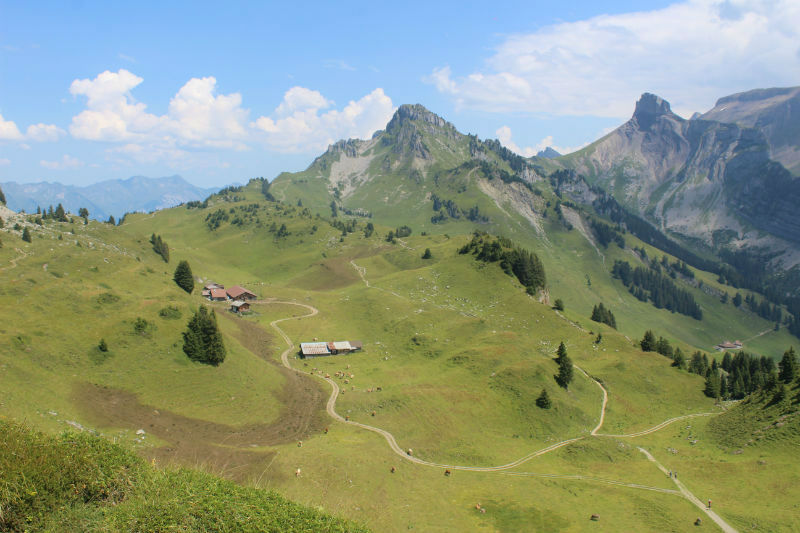
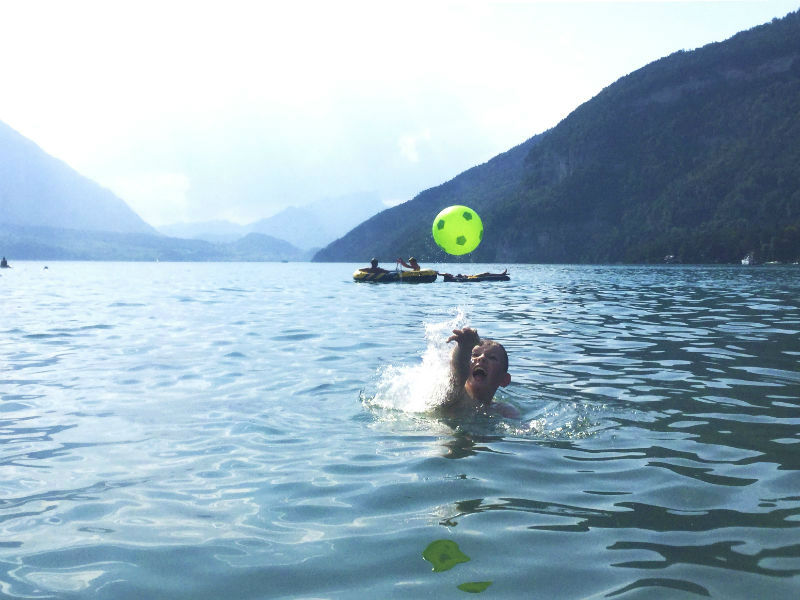
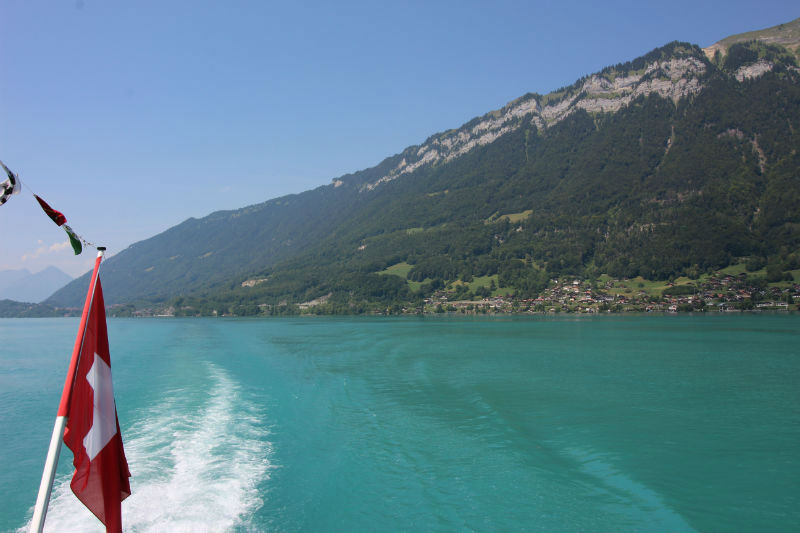
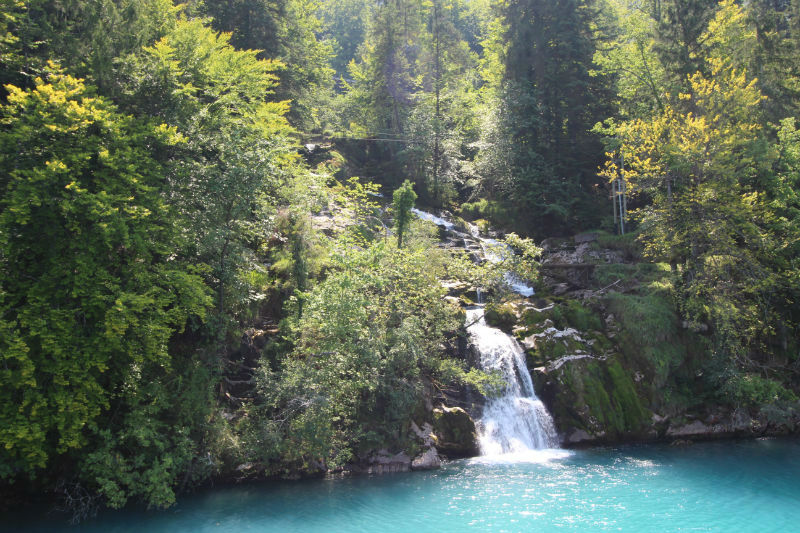
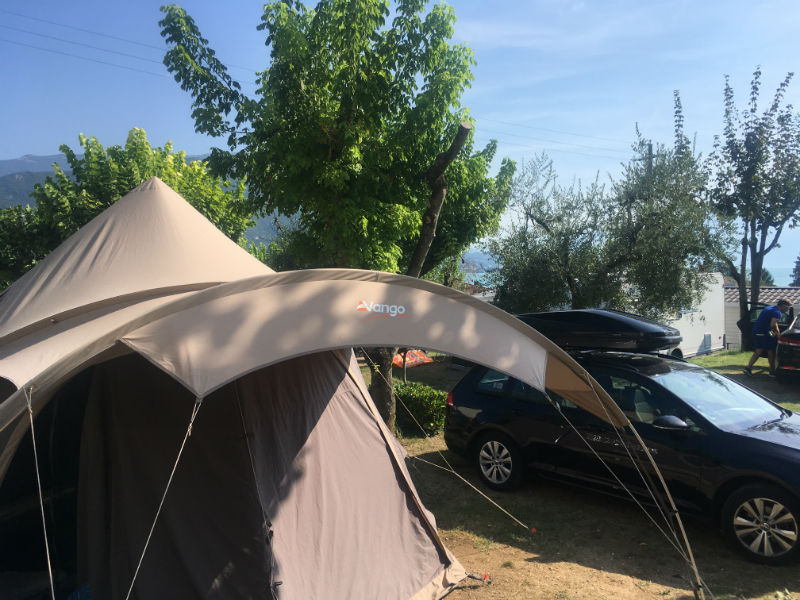
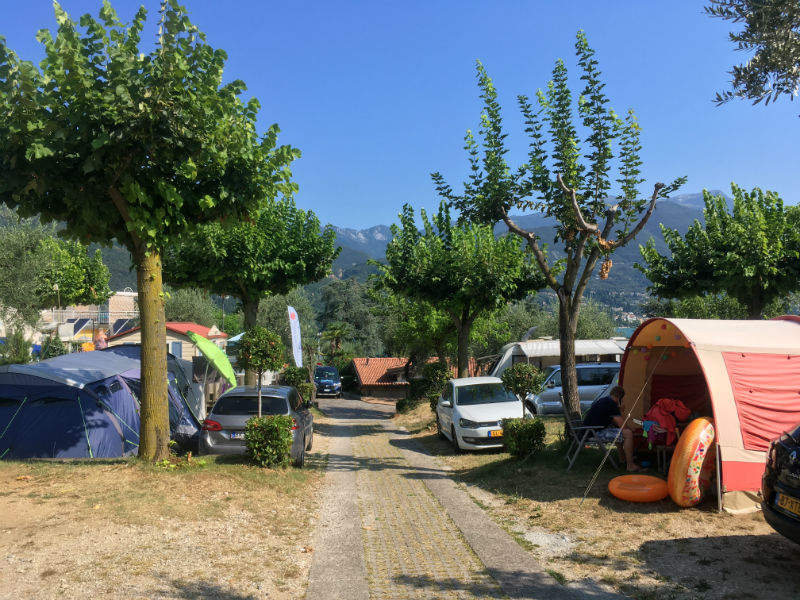
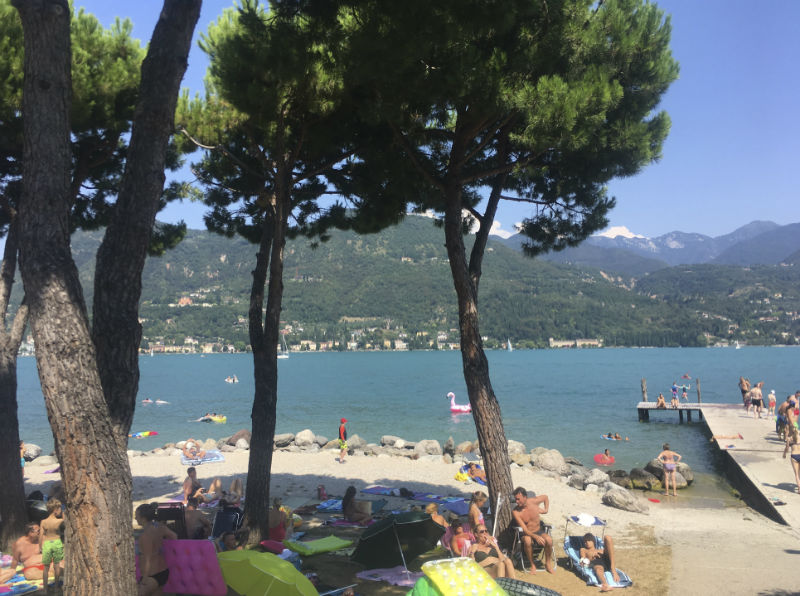
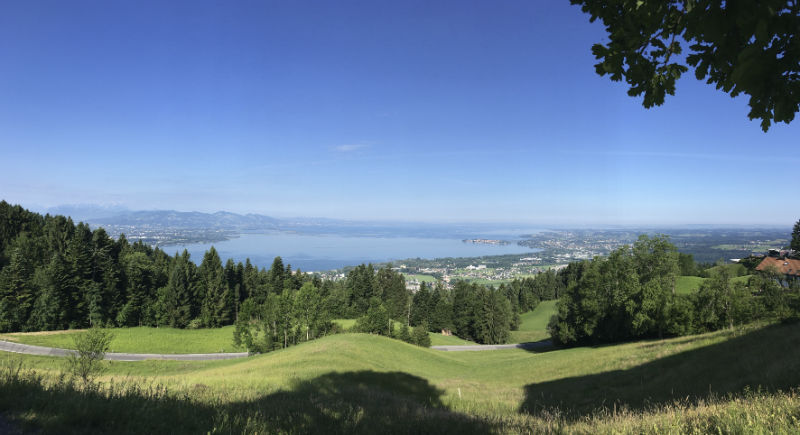
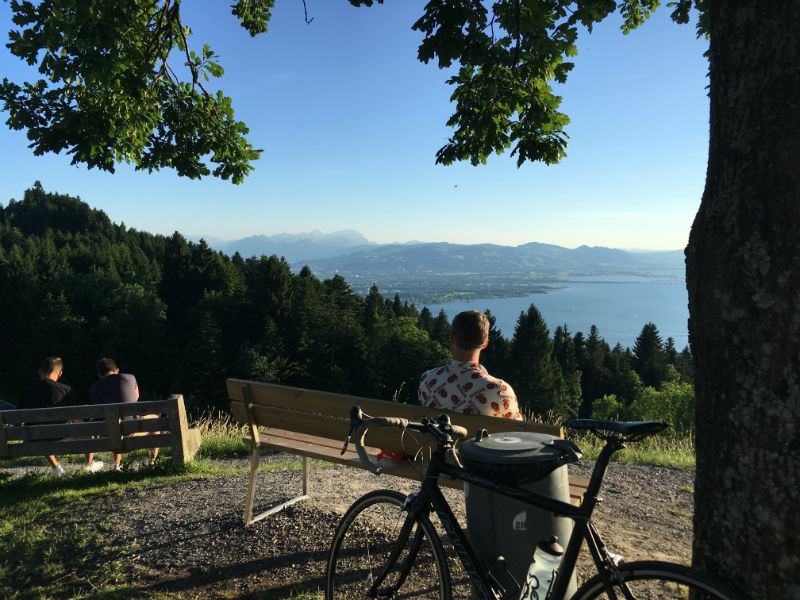
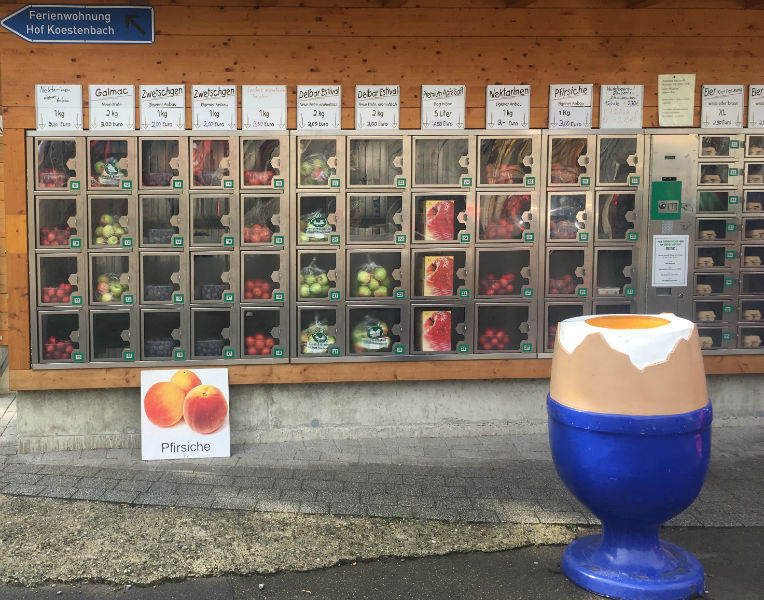
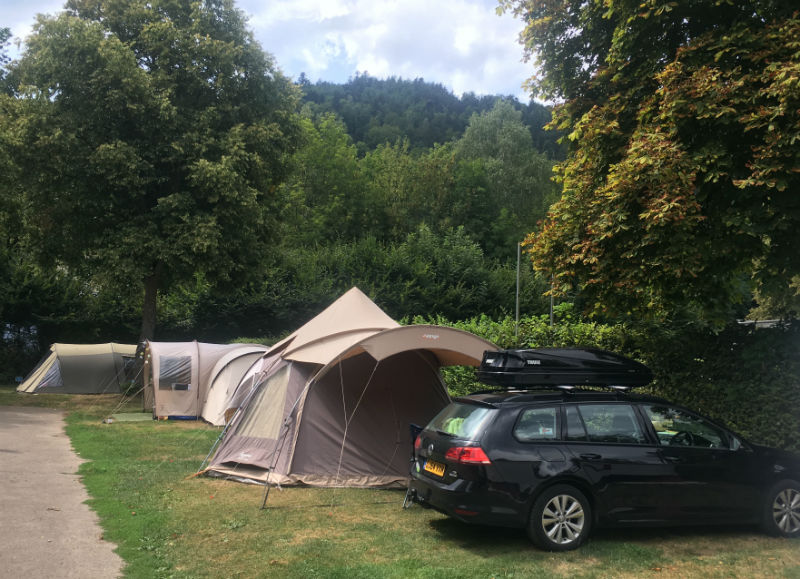


Recent Updates
Editor's pick - The best relaxing campsites
Take some time away to a peaceful location with our top relaxing campsites guide ...
Campsites in the Lake District: our pick of the best
This National Park is one of the most iconic locations in the UK for outdoor adventures, which makes camping ...
Campsites in Kent: our pick of the best
This is our guide to the best attractions and top campsites in the Garden of England, from the iconic cliffs ...
Camping guide to trailers
Trailer stash or trailer trash? Being able to carry lots of other gear when you go camping isn’t such a bad ...
Campsites in Cornwall: our pick of the best
Our selection of the best campsites for exploring one of England's most popular counties ...
Campsites in Devon: our pick of the best
The best campsites for discovering this popular southwest county ...
Coastal campsites: our pick of the best in Britain
Enjoy being beside the seaside with our choice of the best coastal campsites in England, Scotland and Wales ...
Best family campsites in the UK
Our pick of the best campsites for a family holiday ...
Campsites in Wales: our pick of the best
Our selection of the best campsites for exploring wonderful Wales ...
Top campsites near cities for weekend breaks
For a multitude of things to see and do all year round, head for the city with our top campsites for city ...
Other Articles
Campsites open all year: our pick of the best
Enjoy holidays year-round with this selection of campsites that are open all year ...
Campsites in Scotland: our pick of the best
Our choice of the top campsites to enjoy a touring adventure in Scotland, from the Highlands to the wild ...
Yorkshire campsites: our pick of the best
Perfect for exploring Yorkshire, check out these high-quality campsites ...
Campsites in Dorset: our pick of the best
From the stunning coastlines to beautiful countryside, Dorset is perfect for a camping holiday ...
Dog-friendly campsites: our pick of the best
The best campsites for a holiday with your four-legged friend ...
Theme park campsites: our pick of the best
If your idea of a top family holiday is strapping yourself in for thrills and spills on some of the best UK ...
Adults-only campsites: our pick of the best
For a grown-ups-only holiday, check out our recommended sites just for adults ...
Location guide: heavenly Hampshire
Hampshire – a glimpse of a wonderful combination of coast, countryside and city. This attraction-rich region ...
Fishery Creek Touring Park: campsite review
A campsite review of Fishery Creek Touring Park, Hampshire ...
Camping with dogs
Camping is for the whole family – including the four-legged members. Follow our tips for trouble-free camping ...